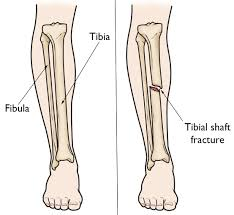A nurse has received a report on a group of clients. Which of the following clients should the nurse assess first?
A client who has type 2 diabetes mellitus with a blood glucose level of 120 mg/dL (normal range: 74-106 mg/dL).
A client who has diabetes insipidus with an intake of 1,500 mL and an output of 1,600 mL in 24 hours.
A client who has Graves' disease with a heart rate of 100/min and reports tremors.
A client who has had a left-sided stroke reports a severe headache and is manifesting confusion.
The Correct Answer is D
Choice A reason:
While a blood glucose level of 120 mg/dL is slightly above the normal range, it is not typically considered an emergency for a client with type 2 diabetes mellitus. This client would require monitoring and potential adjustment of their diabetes management plan, but it does not necessitate immediate assessment.
Choice B reason:
For a client with diabetes insipidus, an intake of 1,500 mL and an output of 1,600 mL in 24 hours is within expected parameters, considering the condition's characteristic polyuria and polydipsia. This client would need ongoing monitoring to maintain fluid balance but is not the highest priority for immediate assessment.
Choice C reason:
A heart rate of 100/min and tremors in a client with Graves' disease could indicate that their condition is not well-controlled. However, these symptoms are not as acutely concerning as those of a stroke and would be addressed after more urgent needs are met.
Choice D reason:
A client who has had a left-sided stroke and reports a severe headache and confusion is exhibiting signs of a possible acute neurological change or complication, such as increased intracranial pressure or hemorrhage. This client requires immediate assessment and intervention due to the potential for rapid deterioration and life-threatening complications.
Nursing Test Bank
Naxlex Comprehensive Predictor Exams
Related Questions
Correct Answer is B
Explanation
Choice A reason:
Resuming a regular diet immediately after the test may not always be recommended. Depending on the individual's condition and the specific instructions from the healthcare provider, there may be dietary restrictions before or after the procedure.
Choice B reason:
Encouraging fluid intake after the procedure is important because it helps to flush out the contrast dye used during the IVP. Adequate hydration can aid in the elimination of the dye and reduce the risk of kidney damage, especially in individuals with pre-existing kidney conditions.
Choice C reason:
This statement is incorrect. An IVP does not use high-frequency sound waves; it involves taking X-ray images of the urinary tract after a contrast dye is injected into a vein. The dye outlines the kidneys, ureters, and bladder on the X-ray images.
Choice D reason:
The presence of red blood cells in the urinalysis does not typically result in the cancellation of an IVP. However, certain conditions, such as an allergy to the contrast dye or severe kidney impairment, may contraindicate the use of an IVP.
Correct Answer is C
Explanation
Choice A reason:
While explaining discharge instructions is an important part of patient education and ensuring safety after leaving the hospital, it is not the immediate priority. The nurse must first address any potential medical issues that could compromise the patient's health, such as circulation and nerve function in the affected limb.
Choice B reason:
Applying an ice pack to the casted leg can help reduce swelling and provide comfort to the client. This is often recommended for the first 24 to 72 hours after the cast is applied, especially if the cast is on a leg. However, this is secondary to assessing the neurovascular status of the limb.
Choice C reason:
Performing a neurovascular assessment is the priority action for the nurse. This assessment includes checking for sensation, warmth, capillary refill, pulses, and movement. It is crucial to identify any signs of compromised blood flow or nerve injury early to prevent further complications.
Choice D reason:
Providing reassurance to the client and parents is important for emotional support and can help alleviate anxiety. However, the nurse's immediate priority is to ensure the physical well-being of the client, which includes performing a neurovascular assessment to detect any urgent issues.

Whether you are a student looking to ace your exams or a practicing nurse seeking to enhance your expertise , our nursing education contents will empower you with the confidence and competence to make a difference in the lives of patients and become a respected leader in the healthcare field.
Visit Naxlex, invest in your future and unlock endless possibilities with our unparalleled nursing education contents today
Report Wrong Answer on the Current Question
Do you disagree with the answer? If yes, what is your expected answer? Explain.
Kindly be descriptive with the issue you are facing.
